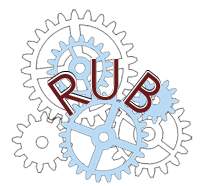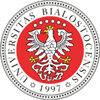Proszę używać tego identyfikatora do cytowań lub wstaw link do tej pozycji:
http://hdl.handle.net/11320/19030Pełny rekord metadanych
| Pole DC | Wartość | Język |
|---|---|---|
| dc.contributor.author | Lorek, Elżbieta | - |
| dc.contributor.author | Lorek, Paweł | - |
| dc.date.accessioned | 2025-10-14T07:11:00Z | - |
| dc.date.available | 2025-10-14T07:11:00Z | - |
| dc.date.issued | 2025 | - |
| dc.identifier.citation | Optimum. Economic Studies, Nr 3(121) 2025, s. 300-313 | pl |
| dc.identifier.issn | 1506-7637 | - |
| dc.identifier.uri | http://hdl.handle.net/11320/19030 | - |
| dc.description.abstract | Cel | Artykuł porusza kwestię podejścia zwinnego w zarządzaniu do adaptacji przedsiębiorstwa w warunkach gospodarki niskoemisyjnej. Podejście zwinne, pomimo teoretycznego potencjału umożliwiającego reorientację przedsiębiorstwa na efektywność ekonomiczno-środowiskową, obarczone jest ryzykiem. Ryzyko to wynika z możliwości oddziaływania zjawisk o etiologii mikro- i makroekonomicznej. Bezpośrednim celem artykułu jest identyfikacja zjawisk występujących na styku organizacji zwinnych i gospodarki niskoemisyjnej. Metoda badań | Zastosowaną metodą badawczą jest analiza literatury przedmiotu powiązana z wnioskowaniem dedukcyjnym, z uwzględnieniem specyfiki nauk ekonomicznych. Wnioski | Zastosowanie podejścia zwinnego w celu adaptacji przedsiębiorstwa do warunków gospodarki niskoemisyjnej jest obarczone dużym ryzykiem z perspektywy zarówno przedsiębiorstwa, jak i stawianych celów środowiskowych. Ryzyko to ujawnia się w kwestiach ekonomicznych (w postaci kosztów funkcjonowania), środowiskowych (w postaci możliwego braku realnych efektów), jak i hazardu moralnego (w postaci wykorzystania praktyk wątpliwych etycznie). Oryginalność / wartość / implikacje / rekomendacje | Artykuł wpisuje się w problematykę modeli biznesu dla gospodarki niskoemisyjnej. Przedstawione w artykule rozważania ukierunkowane są na uzupełnienie istotnej luki badawczej w zakresie ograniczeń dotychczasowych modeli zarządzania w rozwoju przedsiębiorstw w warunkach gospodarki niskoemisyjnej. Identyfikacja takich ograniczeń jest kluczowa dla ukształtowania modelu zarządczego sytuującego się w pobliżu optimum na linii efektywności ekonomicznej i neutralności klimatycznej. | pl |
| dc.description.abstract | Purpose | The article addresses the issue of agile management approaches for adapting businesses in the context of a low-emission economy. Although the agile approach theoretically holds the potential to reorient a business towards economic and environmental efficiency, it is associated with risks. These risks stem from the potential influence of phenomena with both micro- and macroeconomic causes. The article’s primary aim is to identify the phenomena occurring at the intersection of agile organisations and a low-emission economy. Research method | The research method is a literature review combined with deductive reasoning, taking into account the specifics of economic sciences. Results | The use of an agile approach to adapt a business to the conditions of a low-emission economy is associated with significant risks, both from the perspective of the company and the environmental goals set. These risks manifest in economic issues (operational costs), environmental concerns (the potential lack of real outcomes), and moral hazard (the use of ethically questionable practices). Originality / value / implications / recommendations | The article addresses the issue of business models for a low-emission economy. The considerations presented in the article aim to fill a significant research gap regarding the limitations of the existing management models in the development of businesses within a low-emission economy. Identifying these limitations is crucial for shaping a management model that is close to the optimal balance between economic efficiency and climate neutrality. | pl |
| dc.description.sponsorship | Artykuł finansowany ze środków na utrzymanie potencjału badawczego w ramach badań statutowych Katedry Informatyki Ekonomicznej na Wydziale Ekonomii Uniwersytetu Ekonomicznego w Katowicach. | pl |
| dc.language.iso | pl | pl |
| dc.publisher | Wydawnictwo Uniwersytetu w Białymstoku | pl |
| dc.subject | gospodarka niskoemisyjna | pl |
| dc.subject | zwinne zarządzanie | pl |
| dc.subject | low carbon economy | pl |
| dc.subject | agile management | pl |
| dc.title | Bariery i ograniczenia zastosowań zwinnego zarządzania dla rozwoju przedsiębiorstw w gospodarce niskoemisyjnej | pl |
| dc.title.alternative | Barriers and Limitations of Applying Agile Management for Business Development in a Low-Carbon Economy | pl |
| dc.type | Article | pl |
| dc.rights.holder | © Copyright by Uniwersytet w Białymstoku | pl |
| dc.identifier.doi | 10.15290/oes.2025.03.121.16 | - |
| dc.description.Email | Elżbieta Lorek: elzbieta.lorek@ue.katowice.pl | pl |
| dc.description.Email | Paweł Lorek: pawel.lorek@ue.katowice.pl | pl |
| dc.description.Affiliation | Elżbieta Lorek - Akademia Humanitas w Sosnowcu | pl |
| dc.description.Affiliation | Paweł Lorek - Uniwersytet Ekonomiczny w Katowicach | pl |
| dc.description.references | Ahmed K., Ren S., He Y., Vasilakos V., 2015, Online Resource Management for Carbon ‑Neutral Cloud Computing, [w:] Handbook on Data Centers, Khan S.U., Zomaya A.Y. (red.), Springer. | pl |
| dc.description.references | Alfarisi S., Mitake Y., Tsutsui Y., Wang H., Shimomura Y., 2023, Bibliometric Analysis of a Product Service System’s Rebound Effect: Identification of a Potential Mitigation Strategy, „Systems”, nr 11(9), 452, DOI: 10.3390/systems11090452. | pl |
| dc.description.references | Calza F., Parmentola A., Tutore I., 2017, Types of Green Innovations: Ways of Implementation in a Non-Green Industry, „Sustainability”, nr 9(8), 1301, DOI: 10.3390/su9081301. | pl |
| dc.description.references | Gao X., Han G., Liu J., Zhang S., 2023, Spatial Distribution and Sources of Rare Earth Elements in Urban River Water: The Indicator of Anthropogenic Inputs, „Water”, nr 15(4), 654, DOI: 10.3390/w15040654. | pl |
| dc.description.references | Global Assessment Report on Biodiversity and Ecosystem Services of the Intergovernmental Science-Policy Platform on Biodiversity and Ecosystem Services, 2019, Brondizio E.S., Settele J., Diaz S., Ngo H.T. (red.), IPBES, Bonn, DOI: 10.5281/zenodo.3831673. | pl |
| dc.description.references | Irimiás A., Mitev A., 2020, Change Management, Digital Maturity, and Green Development: Are Successful Firms Leveraging on Sustainability?, „Sustainability”, nr 12(10), 4019, DOI: 10.3390/su12104019. | pl |
| dc.description.references | Kim S., Lee Y., Choi B., 2021, Adoption of Satellite Offices in Response to a Pandemic: Sustainability and Infection Control, „Sustainability”, nr 13(4), 8008, DOI: 10.3390/su13148008. | pl |
| dc.description.references | Ko Y.-T., 2020, Modeling an Innovative Green Design Method for Sustainable Products, „Sustainability”, nr 12(8), 3351, DOI: 10.3390/su12083351. | pl |
| dc.description.references | Mesrzade P., Dehghanian F., Ghiani Y., 2023, A Bilevel Model for Carbon Pricing in a Green Supply Chain Considering Price and Carbon-Sensitive Demand, „Sustainability”, nr 15(24), 16563, DOI: 10.3390/su152416563. | pl |
| dc.description.references | Maximini D., 2018, The Scrum Culture: Introducing Agile Methods in Organizations, Springer. | pl |
| dc.description.references | Mory-Alvarado A., Juiz C., Bermejo B., Campoverde-Molina M., 2023, Green IT in Small and Medium-Sized Enterprises: A Systematic Literature Review, „Sustainable Computing: Informatics and Systems”, nr 39, 100891, DOI: 10.1016/j.suscom.2023.100891. | pl |
| dc.description.references | Nikpay M., Roodsari S.T., 2024, Crafting a Scientific Framework to Mitigate Microplastic Impact on Ecosystems, „Microplastics”, nr 3(1), s. 165–183, DOI: 10.3390/microplastics3010010. | pl |
| dc.description.references | Nygaard A., Silkoset R., 2022, Sustainable Development and Greenwashing: How Blockchain Technology Information Can Empower Green Consumers, „Business Strategy and the Environment”, nr 32(6), s. 3801–3813, DOI: 10.1002/bse.3338. | pl |
| dc.description.references | Product Life Cycle Accounting and Reporting Standard, 2011, World Resources Institute, ghgprotocol.org/sites/default/files/standards/Product-Life-Cycle-Accounting-Reporting-Standard_041613.pdf [data dostępu: 12.03.2024]. | pl |
| dc.description.references | Rau H., Wu J.J., Procopio K.M., 2023, Exploring Green Product Design Through TRIZ Methodology and the Use of Green Features, „Computers & Industrial Engineering”, nr 180, 109252, DOI: 10.1016/j.cie.2023.109252. | pl |
| dc.description.references | Renewable Energy in Europe – Approximated Recent Growth and Knock-on Effects, 2015, European Environment Agency, www.eea.europa.eu/publications/renewable-energy-in-europe-approximated [data dostępu: 18.03.2024]. | pl |
| dc.description.references | Rimpas D., Kaminaris S.D., Piromalis D.D., Vokas G., Orfanos V.A., 2023, Impact of Lithium Battery Recycling and Second-Life Application on Minimizing Environmental Waste, „Environmental Sciences Proceedings”, nr 26(1), 41, DOI: 10.3390/environscip‑roc2023026041. | pl |
| dc.description.references | Rožman M., Tominc P., Štrukelj T., 2023, Competitiveness Through Development of Strategic Talent Management and Agile Management Ecosystems, „Global Journal of Flexible Systems Management”, nr 24, s. 373–393, DOI: 10.1007/s40171-023-00344-1. | pl |
| dc.description.references | Saha D., Carlock G., Shrestha R., Feldmann J., Leslie-Bole H., 2021, Building Blocks for a Low-Carbon Economy: Catalytic Policy and Infrastructure for Decarbonizing the United States by 2050, World Resources Institute, DOI: 10.46830/wriwp.21.00054. | pl |
| dc.description.references | Thørgsen J., 2021, Consumer Behavior and Climate Change: Consumers Need Considerable Assistance, „Current Opinion in Behavioral Sciences”, nr 42, s. 9–14, DOI: 10.1016/j.cobeha.2021.02.008. | pl |
| dc.description.references | Wang M., Wang B., Abareshi A., 2020, Blockchain Technology and Its Role in Enhancing Supply Chain Integration Capability and Reducing Carbon Emission: A Conceptual Framework, „Sustainability”, nr 12(24), 10550, DOI: 10.3390/su122410550. | pl |
| dc.description.references | Zhang Y., Lan M., Zhao Y., Su Z., Hao Y., Du H., 2024, Regional Carbon Emission Pressure and Corporate Green Innovation, „Applied Energy”, nr 360, 122625, DOI: 10.1016/j.apenergy.2024.122625. | pl |
| dc.description.references | Zink T., Geyer T., 2017, Circular Economy Rebound, „Journal of Industrial Ecology”, nr 21(3), s. 593–602, DOI: 10.1111/jiec.12545. | pl |
| dc.description.references | Žužek T., Gosar Ž., Kuŝar J., Berlec T., 2020, Adopting Agile Project Management Practices in Non-Software SMEs: A Case Study of a Slovenian Medium-Sized Manufacturing Company, „Sustainability”, nr 12(21), 9245, DOI: 10.3390/su12219245. | pl |
| dc.description.references | www 1, www.agilealliance.org/glossary/business-agility [data dostępu: 15.03.2024]. | pl |
| dc.description.references | www 2, www.enelgreenpower.com/learning-hub/debates/future-green-companies [data dostępu: 2.03.2024]. | pl |
| dc.description.references | www 3, www.compareyourfootprint.com/5-benefits-of-carbon-footprinting-your-organisation [data dostępu: 9.03.2024]. | pl |
| dc.description.references | www 4, commission.europa.eu/strategy-and-policy/priorities-2019–2024/europe‑an-green-deal_en [data dostępu: 8.03.2024]. | pl |
| dc.description.references | www 5, greensoftware.foundation/articles/cloud-computing-the-business-case-for-100-carbon-free-energy [data dostępu: 21.03.2024]. | pl |
| dc.description.references | www 6, www.lifecycleinitiative.org/starting-life-cycle-thinking/life-cycle-approaches/carbon-footprint [data dostępu: 21.03.2024]. | pl |
| dc.description.references | www 7, 2030.builders/green-transformation-the-new-age-of-sustainability [data dostępu: 2.03.2024]. | pl |
| dc.description.references | www 8, www.tuvsud.com/en-gb/resource-centre/blogs/uk/sustainability-blog/benefits-of-doing-a-carbon-footprint [data dostępu: 9.03.2024]. | pl |
| dc.description.references | www 9, brainhub.eu/library/differences-lean-agile-scrum [data dostępu: 2.03.2024]. | pl |
| dc.description.references | www 10, isg-one.com/articles/can-cloud-computing-reduce-carbon-emissions [data dostępu: 24.03.2024] | pl |
| dc.description.number | 3(121) | pl |
| dc.description.firstpage | 300 | pl |
| dc.description.lastpage | 313 | pl |
| dc.identifier.citation2 | Optimum. Economic Studies | pl |
| dc.identifier.orcid | 0000-0002-1648-7322 | - |
| dc.identifier.orcid | 0000-0003-3252-5234 | - |
| Występuje w kolekcji(ach): | Optimum. Economic Studies, 2025, nr 3(121) | |
Pliki w tej pozycji:
| Plik | Opis | Rozmiar | Format | |
|---|---|---|---|---|
| Optimum_3_2025_E_Lorek_P_Lorek_Bariery_i_ograniczenia_zastosowan_zwinnego_zarzadzania.pdf | 236,79 kB | Adobe PDF | Otwórz |
Pozycja jest chroniona prawem autorskim (Copyright © Wszelkie prawa zastrzeżone)

